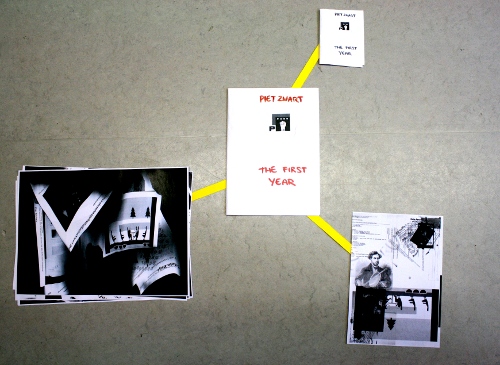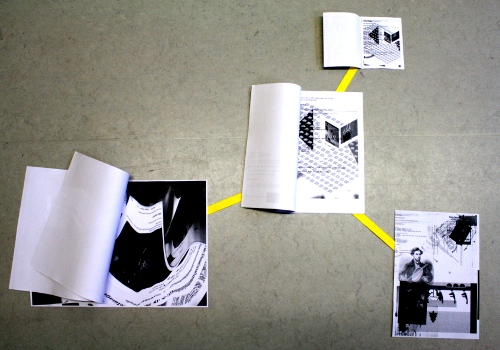User:Eleanorg/2.1/Prototypes/photocopied editions
An original loose-leaf catalogue of work is copied by 3 different people.
Feedback
From one of the guinea-pigs:
So you've asked me about my copy of your synthesis of piet zwart media design first year.
I did copy it, in the photocopying machine. I placed in the copying A3 glass surface as much material as if it would fit that space and made A3 copies of it. As the 1st generation of copied pages had some white spaces, I choose to take away by riping little bits of the paper (to much bright surfaces). I then placed the pages with holes on top of each-other, so that the ones on top could show behind the ones at the bottom. As I am a bit restless and nobody was around I decided to move the pages while being scanned. The 2nd generation appeared with a a motion effect and the same material often reoccurred.
Did I need to do all this? No. I could have just made a verbatim copy of what you gave, or (re)digitized the material and keep in some hard-drive. Maybe becasue you told me that some people decided to make verbatim copies I thought: "that's too easy". Question is if what I did is any different that a verbatim copy only with less resolution, less linearity, harder reading, or does it manages to say something more about those works present in your pages?
Observations
All three people changed the order of the works and made use of the photocopier's ability to superimpose images one over another and/or rotate them. One person edited down the content, offering 'edited highlights', while the other two used rotation/superimposition to condense all the original content. None of them added any new, external content.
Their response to the brief was heavily influenced by the possibilities and limitations of the photocopier as tool. How would this differ if copying had to be done by hand, or via some other medium? (See: prototype 2, Transcription).


